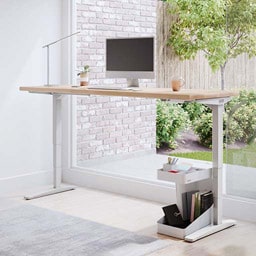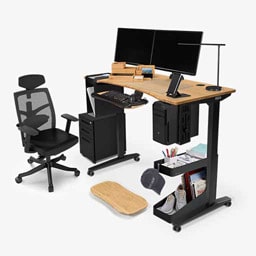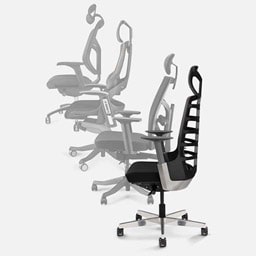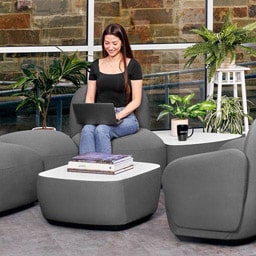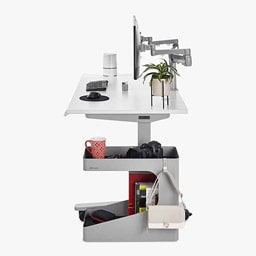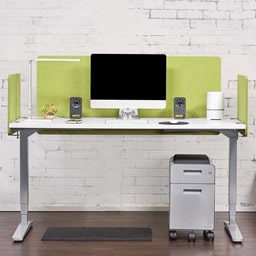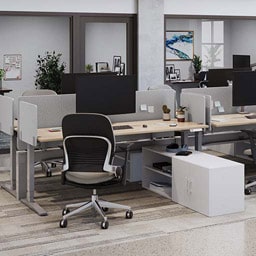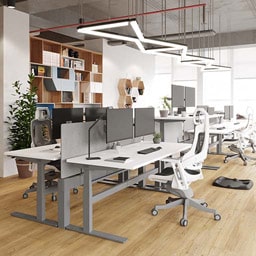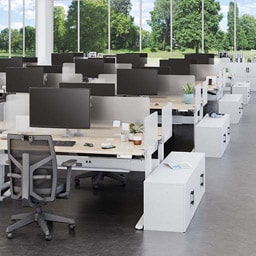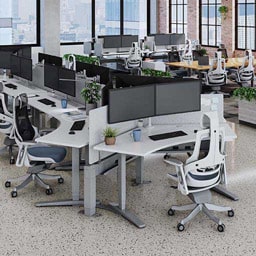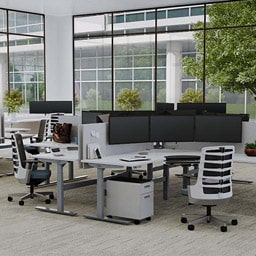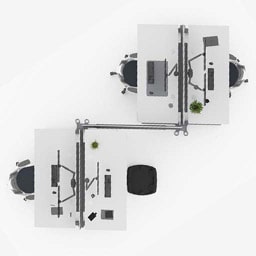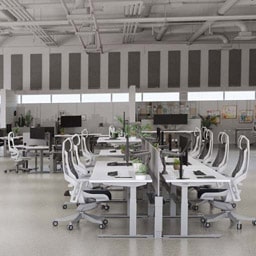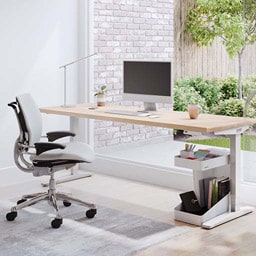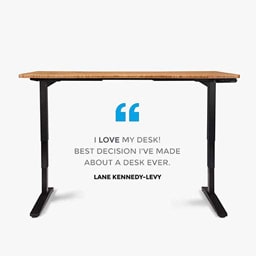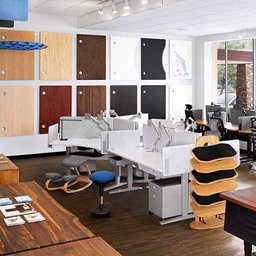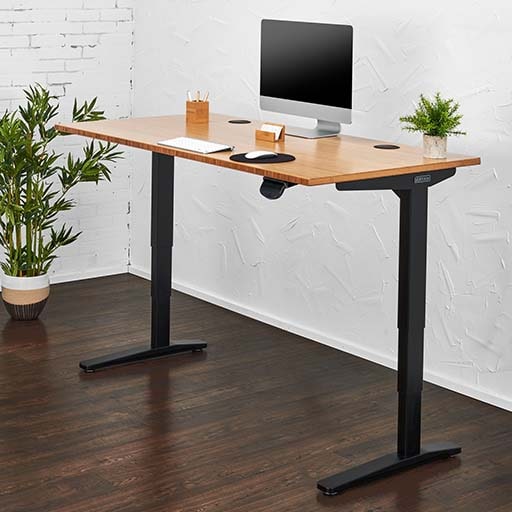The Truth About Ergonomic Keyboards
Posted by Mandy Spivey on Jul 27th 2018
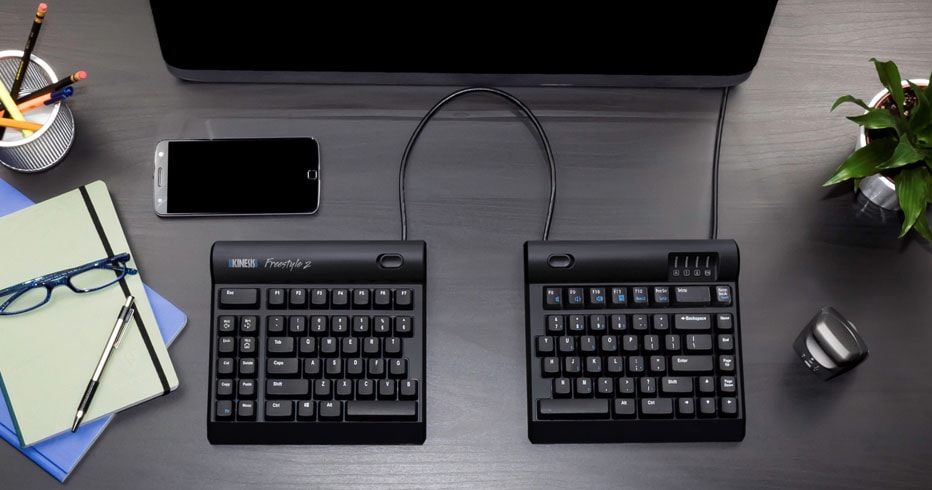
At UPLIFT Desk, we're always looking for the best ways to optimize comfort and safety at our workstations. One of the most popular desk tools out there, the ergonomic keyboard, helps a lot of people, but gets a surprising amount of questions. When you're looking into purchasing a keyboard that tents, splits, and splays, you might feel like you have your work cut out for you, but we're here to walk you through the basics and help you decide if adopting an ergonomic keyboard at your workstation would be beneficial for you.
How Ergonomic Keyboards Differ from Traditional Keyboards
If your work takes place in an office, there's a chance that one or more of your coworkers types with an ergonomic keyboard. These specially-designed boards allow you to type comfortably and more efficiently. Ergonomic keyboards should allow the user to complete their job tasks while simultaneously lessening the risk of developing a repetitive stress injury, or RSI, while typing. In short, ergonomic keyboards are designed fit to you, and not the other way around.
So depending on your body's and your work style, your keyboard needs might differ from that of your coworker's. We're here to walk you through the basics of ergonomic keyboards, go over some common misconceptions, and help you setup your new keyboard to fit your body.
Ergonomic Keyboards - Terms to Know
Split - A much-loved feature, a split keyboard will give you much more freedom than you had before to adjust the left and right sides to the exact angle that keeps your wrists, arms, and shoulders in ideal alignment. Most keyboards give you an option of 9 or 20 inch separations.
Tent - This handy little feature allows you to adjust the keyboard's horizontal adjustment range horizontally and vertically, from a range of 0 to 30 degrees. This is great for people who want to type with their hands and wrists in more natural angles for their body.
Splay - Keyboards that splay are able to be positioned into a V-like formation, which sets your wrists in the ergonomically-advised angle.
Tilt Angle - This feature allows the user to personalize the tilt of their board for even more comfort.
Travel - A lot of ergonomic keyboards are also conveniently travel keyboards, so they're designed to be lightweight, portable, and have fewer extra peripherals. If your work occurs outside of the office, this is a must-have feature.
Five Common Questions About Ergonomic Keyboards
Do I need an ergonomic keyboard if I don't have Carpal Tunnel or some other injury?
Although it's easy to think if you're not typing with pain that you have no problems with your keyboard, but that is not always the case. All kinds of people would do better working with an ergonomic keyboard, even people who have never experienced pain on the job. And if you're looking to prevent stress injuries, using a keyboard that adjusts to you is a smart and cost-effective way to do it.
Is it expensive to switch out my office's keyboards for ergonomic keyboards?
With a little planning and budgeting, most businesses can pull off making the transition to more ergonomic keyboards. Investing in tools that help your employees also help you save money in the long run. And here's a little secret for you: ergonomic keyboards have a surprisingly long product life, so you won't have to replace them as often as basic keyboards. Now how about that?
Do I need to be trained in ergonomics to be able to pick the right keyboard for me?
No, although ergonomics is not a subject they teach in school, finding the perfect ergonomic keyboard for your body and work style is easy as long as you research and compare a few models. The first step is to consider your body type and the work you do everyday: this will get you started and help you narrow in on the right keyboard for you.
I only use my keyboard for a few hours a day; do I need an ergonomic keyboard?
Most people would be able to work better and in more comfort if they switched to an ergonomic keyboard, even if you only type for 15 minutes here or there. Although a lot of users wait until they start jobs that require all-day typing, ergonomic keyboards can improve your typing posture immensely as soon as you get over the slight learning curve.
What if I use a normal mouse? Should I get an ergonomic keyboard?
In a majority of cases, working with an ergonomic keyboard can help you work more efficiently and comfortably, even if you're working with a traditional mouse. However, if your mousing hand has any sort of pain, you might need to upgrade your mouse, as well.
How to Find the Right Board - Three Important Tips
When you're ready to start working in comfortable keyboarding postures, there are three things you'll want to look for:
1. Think About Adjustability - Basic keyboards have only one position, maybe two if your keyboard has legs. The best ergonomic keyboards allow you to adjust the angle to multiple positions, which lets many users fine-tine it to their body's dimensions.
2. Bluetooth Wireless or USB Connection - This part is easy. What type of connection do you have? Depending on your setup, you'll need to select the right board for your peripherals.
3. Look for Tactile Feedback of Keys - The less pressure you have to use while typing, the better it is on your wrists and hands. Try to reduce the force you use for each key stroke, and buy an ergonomic keyboard with keys that are not too tall and can be easily depressed.
If You Already Have an Ergonomic Keyboard
So you already have your keyboard, the next step is to set it up so that fits you and assists you in typing in ideal ergonomic postures. To start, stick your fists out and in a slow and relaxed motion, and bring your elbows in to your sides. Your posture should feel natural and not strained in any way. This is your correct typing angle. After you're in this position, you can easily set up your keyboard and lock in place where it's comfortable for you.
After a minimal learning curve, you'll be on your way to typing better and with more comfort. The layout of the letters, numbers, and functions are very similar to that of a traditional keyboard's, so some users will pick up this new typing skill in a matter of days, while it takes some users a little longer. We do think that even with a learning curve, adopting a better way of typing by using an ergonomic keyboard is not only worthwhile, it's necessary for people who work at a computer for a living.
I'm Ready to Build My Ergonomic Space
If you're already working with an ergonomic keyboard and would like to complete your setup, start with your:
Start piecing together your perfectly comfortable office space with great ergonomic keyboard brands like Goldtouch and Kinesis. When you're ready to shop places to set your keyboard upon (aka your desk) our Desk Selector tool is a great way to see and shop our desktop and frame options. If you need help or have questions along the way, we're here. Give us a call, chat us, or email our team and we can help you build the right space for you, starting with your keyboard.
